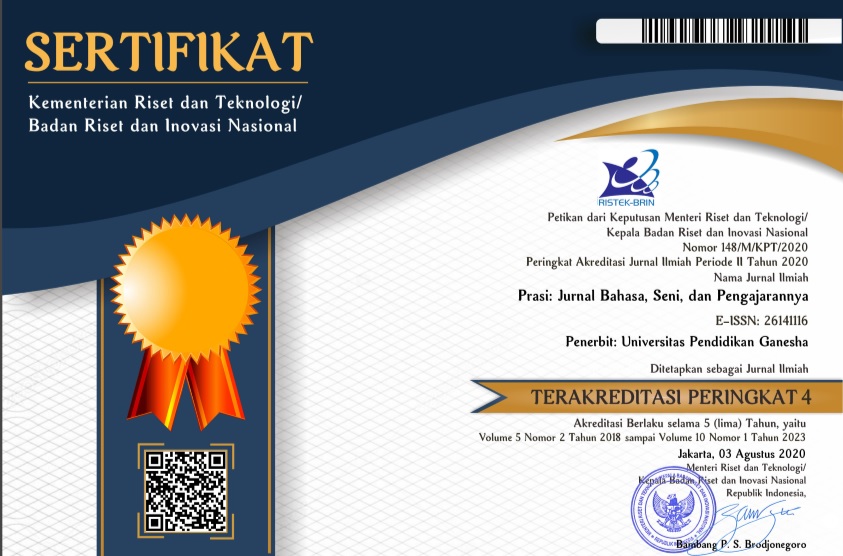ANALISIS VISUAL SAMPUL MAJALAH “BOBO” EDISI BULAN APRIL 2016
DOI:
https://doi.org/10.23887/prasi.v12i01.13917Abstract
Bobo Magazine is one of children’s magazine which is still exsisted from 1974 until now. Their cover has its own uniqueness. This research was aimed at identifying visual layout of Bobo Magazine, finding the quality of element’s design and visuals elements. The research method is qualitative approach which are collected from observation results, documentation and library research. The object of research was Bobo’s magazine cover of April edition, 2016. The data analysis used to analyze visualization quality was the theory of Tom Lincy about five principal design on printed works, such as proportion, balance, contrast, rhyme, and unity. From the visual data analysis it was found that layout composition from illustration, texts/letter, and colour on cover has applied the principles of unity, balance, rhyme, contrast and proportion. The visual’s fascination is unique, different from others, because it was supported by the use of Bobo’s family characters as icons, the use of bright pastel colours, the use of exact San Serif letters and dynamic layout of objectsDownloads
Published
2017-06-25
Issue
Section
Articles
License
Authors who publish with Prasi agree to the following terms:- Authors retain copyright and grant the journal the right of first publication with the work simultaneously licensed under a Creative Commons Attribution License (CC BY-SA 4.0) that allows others to share the work with an acknowledgment of the work's authorship and initial publication in this journal
- Authors are able to enter into separate, additional contractual arrangements for the non-exclusive distribution of the journal's published version of the work (e.g., post it to an institutional repository or publish it in a book), with an acknowledgment of its initial publication in this journal.
- Authors are permitted and encouraged to post their work online (e.g., in institutional repositories or on their website) prior to and during the submission process, as it can lead to productive exchanges, as well as earlier and greater citation of published work. (See The Effect of Open Access)


.png)
.png)









